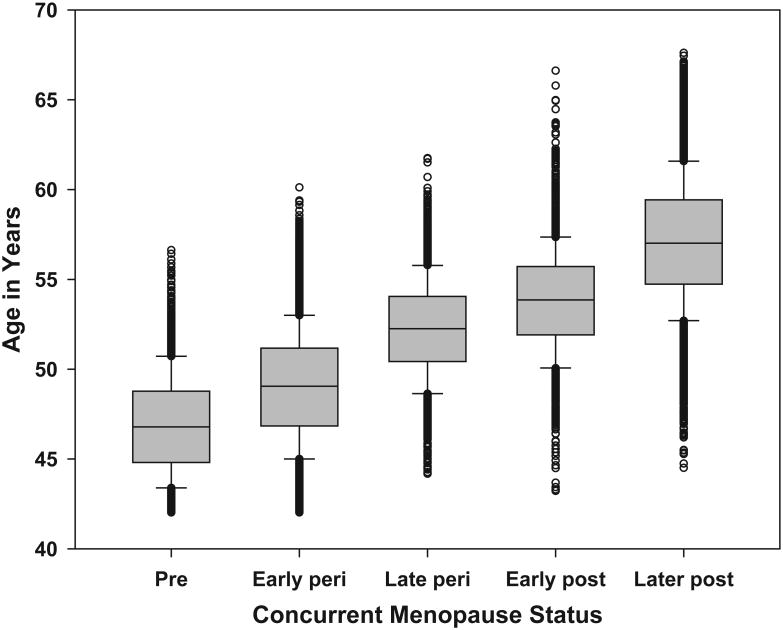Figure 1.
Distribution of chronologic age by concurrent menopause status, from the Study of Women's Health Across the Nation (SWAN), baseline through 12th annual follow-up visit. Observations concurrent with pregnancy/breastfeeding, exogenous hormone therapy use, and hysterectomy/bilateral oophorectomy are omitted. Menopause status was categorized as: 1) premenopausal (menstrual period in the past 3 months, no change in regularity over the previous 12 months); 2) early perimenopausal (menstrual period in the past 3 months, increased irregularity over the previous 12 months); 3) late perimenopausal (menstrual bleeding within the previous 12 months but not the previous 3 months); 4) early postmenopausal (0-24 months since the final menstrual period); and 5) later postmenopause (>24 months since the final menstrual period).

